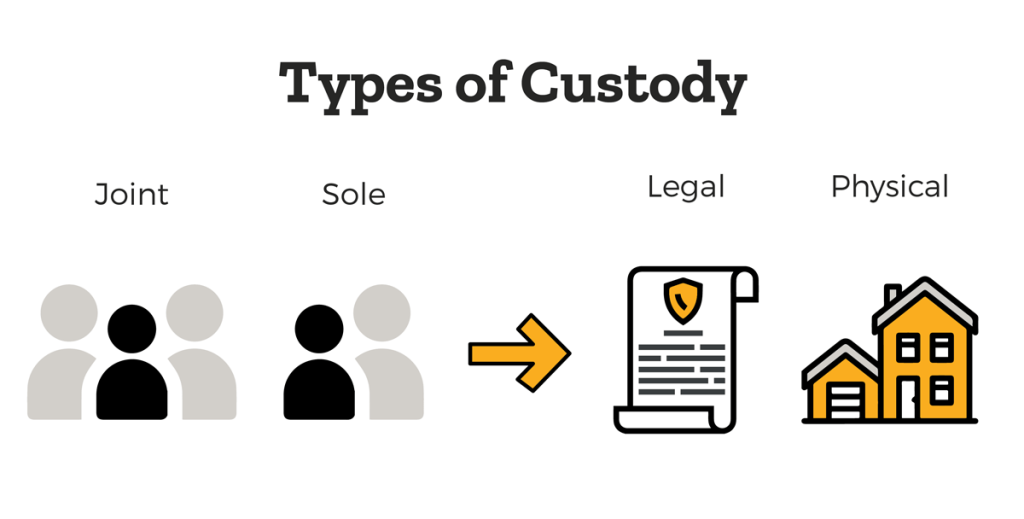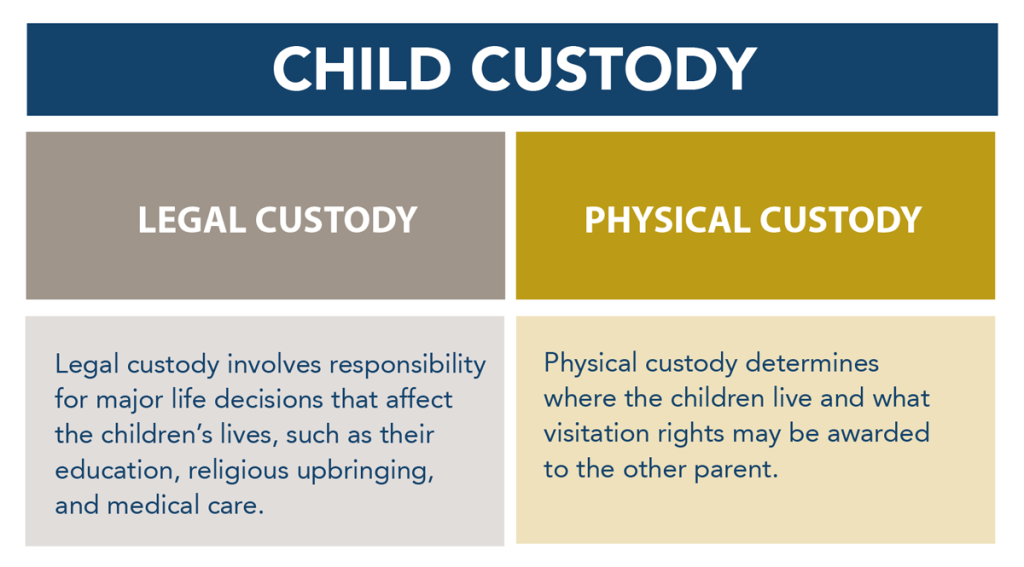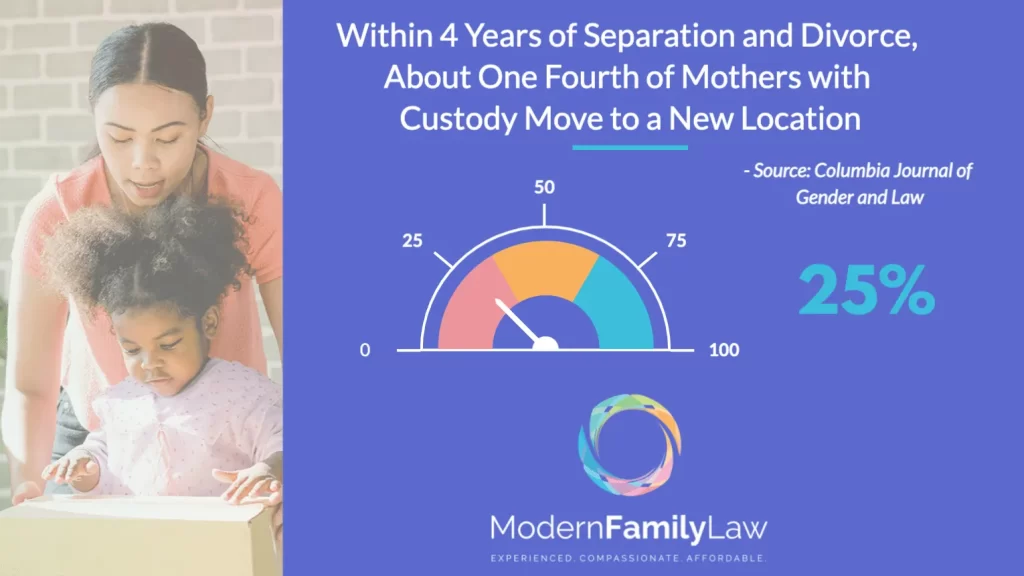California Child Custody Types
Contents
- California Child Custody Types
- 1. Physical Custody
- 2. Legal Custody
- 3. Sole Custody
- 4. Joint Custody
- Custody and Special Needs Children
- Custody for Non-Parental/Guardians
- Custody Modification
- Parental Relocation
- Custody and Child Support
- Rights of Unmarried Parents
- FAQs on Types of Child Custody in California
- What type of custody is best for a child?
- What is the difference between primary custody and sole custody in California?
- What are the rules for custody in California?
- Who usually gets custody of a child in California?
- How does a mother lose custody in California?
- Can a father take a child away from the mother in California?
- Do you have to allow visitation if you have sole custody in California?
- What are the chances of a father getting 50/50 custody in California?
- Can I change my child’s last name if I have sole custody in California?
Child custody in California can be categorized into four main types (joint, sole, legal, & physical), each with distinct features and implications for the parenting arrangement.

The California Family Code empowers the court, during a marital court action or at any time after that, to make an order for the custody of a child during minority “that seems necessary or proper.” [CA Fam. Code § 3022] However, courts may be guided by several basic statutory principles in exercising discretion under this provision.
1. Physical Custody
Physical custody refers to where the child lives and with which parent. It concerns the child’s day-to-day living situation. According to CA Fam. § 3007:
A parent may be granted exclusive physical custody without exclusive legal custody. This means the child resides with and is supervised by one parent, subject to the other parent’s visitation rights; but the custodial parent does not have sole decision-making power regarding other matters affecting the child.
This means a parent has the right to have a child live with him or her. Some states will award joint physical custody when the child spends significant time with both parents. Joint physical custody works best if parents live relatively close to each other, as it lessens the stress on children and allows them to maintain a somewhat normal routine.
Where the child lives primarily with one parent and has visitation with the other, generally, the parent with whom the child primarily lives (called the “custodial” parent) will have sole or primary physical custody. The other parent (the noncustodial parent) will have the right to visitation or parenting time with his or her child.
- Joint Physical Custody: Both parents share the child’s living arrangements to ensure the child has significant time with each parent.
- Sole Physical Custody: The child resides with one parent most of the time, and the other parent may have visitation rights.
2. Legal Custody
Legal custody is the right and responsibility to make important child welfare decisions, including education, healthcare, and religious upbringing.
According to CA Fam. § 3006:
A parent may be awarded the exclusive right and responsibility to make decisions relating to the child’s health, education, and welfare. Still, unless exclusive physical custody is also granted, that parent does not have sole control over the child’s residence and supervision.
In other words, legal custody of a child means having the right and the obligation to make decisions about a child’s upbringing. For example, a parent with legal custody can decide about the child’s schooling, religious upbringing, and medical care. In many states, courts regularly award joint legal custody, meaning both parents share the decision-making.

If you share joint legal custody with the other parent and exclude him or her from the decision-making process, your ex can take you back to court and ask the judge to enforce the custody agreement. You would not get fined or go to jail, but it would probably be embarrassing and cause more friction between you, which may harm the children.
If you find that sharing joint legal custody with your child’s other parent is unworkable due to their unwillingness to communicate on important matters or because of abusive behavior, you have the option to petition the court for sole legal custody.
- Joint Legal Custody: Both parents share in making significant decisions for the child, requiring cooperation in decision-making processes.
- Sole Legal Custody: Only one parent has the authority to make major decisions regarding the child’s life without needing the other parent’s consent.
3. Sole Custody
According to CA Fam. § 3006:
A parent may be awarded the exclusive right and responsibility to make decisions relating to the child’s health, education, and welfare; but unless exclusive physical custody is also granted, that parent does not have sole control over the child’s residence and supervision.
In other words, one parent can have either sole legal custody or sole physical custody of a child. Courts generally would not hesitate to award sole physical custody to one parent if the other parent is deemed unfit, for example, because of alcohol or drug dependency or charges of child abuse or neglect.
- One Parent’s Responsibility: Sole custody means one parent is granted the majority of custody rights, either physical, legal, or both.
- Limited Visitation for Non-Custodial Parent: The non-custodial parent may have visitation rights, but their involvement in decision-making or living arrangements is restricted.
- Granted in Specific Circumstances: Courts may award sole custody if one parent is deemed unfit or if joint custody is considered not in the child’s best interests due to various factors such as abuse, neglect, or parental conflict.
Impact of Domestic Violence
The impact of Domestic Violence on custody and visitation in California is significant. Courts take allegations or evidence of domestic violence very seriously. Suppose a parent is found to have committed domestic violence against the other parent, the child, or the child’s siblings. In that case, it is presumed that granting custody to the abusive parent is not in the best interest of the child. However, this presumption can be rebutted if the court finds evidence that the abusive parent has completed a batterer’s intervention program, is not a risk to the child, and is capable of providing a stable and safe environment.
Visitation Rights
Visitation Rights are granted to the non-custodial parent to maintain a relationship with their child. In California, visitation orders vary and can include specific days and times for visitation, supervised visitation (when the child’s safety and well-being require the presence of another adult), or virtual visitation through phone or video calls. The court’s primary concern is the child’s best interest, aiming to facilitate a healthy relationship with both parents unless it’s proven detrimental to the child’s safety or well-being.
4. Joint Custody
- Combination of Custody: Joint custody can include both joint legal and joint physical custody, meaning parents share responsibilities for the child’s care and decision-making.
- Co-parenting Requirement: This arrangement necessitates cooperative effort and communication between parents to meet the child’s needs.
- Flexibility and Customization: The specific terms of joint custody can vary greatly, designed to suit the child’s best interests and the parents’ schedules and capacities.
CA Fam. § 3002 states that:
Under a “pure” joint custody plan, neither parent has sole physical or legal custody; both have the authority to control and supervise the child, and the child’s physical presence is shared.
Parents who do not live together have joint custody (also called shared custody) when they share the decision-making responsibilities for and/or physical control and custody of their children. Joint custody can exist if the parents are divorced, separated, or no longer cohabiting, or even if they never lived together. Joint custody may be:
Joint Legal Custody
Joint legal custody means both parents share the right and responsibility to make decisions regarding the child’s health, education, and welfare. Established in CA Fam. § 3003.
Joint Physical Custody
A joint physical custody award means each parent has “significant periods” of physical custody. Physical custody must be shared in such a way as to assure the child “frequent and continuing contact with both parents,” subject to CA Fam §3011 and §3020; but that does not mean the child’s time must be equally divided with each parent (i.e., one parent can still be the “primary caretaker”) as established in CA Fam. § 3004.
Joint Custody Agreements
When parents share joint custody, they usually work out a schedule according to their work requirements, housing arrangements, and the children’s needs. The court will impose an arrangement if the parents cannot agree on a schedule. A common pattern is for children to split weeks between each parent’s house or apartment.
Other joint physical custody arrangements include alternating months, years, or six-month periods or spending weekends and holidays with one parent while spending weekdays with the other.
There is even a joint custody arrangement where the children remain in the family home, and the parents take turns moving in and out, spending their time in separate housing. This is called “bird’s nest custody” or “nesting.”
Custody and Special Needs Children
Custody and Special Needs Children require careful consideration of the child’s specific health, educational, and care requirements. California courts consider each parent’s ability to meet these needs, including access to necessary treatments, therapies, and special education programs. Custody arrangements may also consider the stability and continuity of care, particularly important for children with special needs.
Custody for Non-Parental/Guardians
Subject to strict statutory standards (CA Fam. § 3041):
Custody may be granted to a nonparent (who will have exclusive responsibility for the child’s care and control); the parents, at most, will have reasonable visitation rights.
Custody for Non-Parental/Guardians in California can be granted under certain circumstances. Grandparents, other relatives, or legal guardians may seek custody if it’s determined to be in the child’s best interest. This may occur in situations where the biological parents are unable to care for the child due to substance abuse, incarceration, or abuse and neglect. The court evaluates the relationship between the child and the non-parent, the child’s health, safety, and welfare, and the ability of the non-parent to provide a stable environment.
Custody Modification
In California, a parent or guardian can request a custody modification if there has been a “significant change in circumstances” since the original order was made. This could include changes in a parent’s living situation, a parent’s inability to follow the original custody arrangement, or concerns over the child’s well-being. The requesting party must prove that the modification is in the best interest of the child, focusing on the child’s health, safety, and welfare.
Parental Relocation
In California, the relocating parent must provide notice to the other parent. If the move is contested, the court will consider the child’s best interests, including the reasons for the move, the distance, the impact on the child’s relationship with the non-moving parent, and how the move affects the child’s welfare and education.

Custody and Child Support
Custody and Child Support are interrelated but distinct legal issues. In California, both parents are obligated to support their children financially. The amount of child support is influenced by the custody arrangement, with considerations given to the income of both parents, the amount of time the child spends with each parent, and the child’s needs. Child support is intended to cover living expenses, healthcare, education, and other needs of the child.
Rights of Unmarried Parents
Rights of Unmarried Parents in California are protected, but establishing legal paternity or maternity is crucial for asserting custody rights. Unmarried mothers automatically have legal and physical custody from birth. Unmarried fathers must establish paternity to seek custody or visitation rights. This can be done voluntarily at the child’s birth or through a court order. Once paternity is established, fathers have the same rights and responsibilities as married parents regarding custody, visitation, and support.
FAQs on Types of Child Custody in California
What type of custody is best for a child?
The best type of custody for a child depends on various factors, including the parent’s ability to cooperate, the child’s needs, and the family’s unique circumstances. Joint custody is often beneficial because it allows the child to maintain a significant relationship with both parents. However, in situations where conflict, abuse, or neglect is present, sole custody might be in the child’s best interest. Ultimately, the court’s primary concern is the child’s welfare and ensuring the custody arrangement serves their best interests.
What is the difference between primary custody and sole custody in California?
Primary custody is when the child lives with one parent most of the time, but the other parent has visitation rights and may share in decision-making. Sole custody, however, means one parent has exclusive physical and/or legal custody rights. In sole custody arrangements, the non-custodial parent’s involvement in the child’s life, such as visitation, is limited and does not include making major decisions about the child’s welfare.
What are the rules for custody in California?
The primary rule for determining custody in California is the child’s best interest. This includes considering the child’s health, safety, and welfare, the nature of the child’s relationship with each parent, and the ability of the parents to care for the child. Courts also consider factors like the child’s ties to school, home, and community, as well as any history of family violence or substance abuse.
Who usually gets custody of a child in California?
California law does not favor one parent over the other based on gender. Custody is determined based on what is in the child’s best interest, taking into account various factors such as the child’s age, health, emotional ties with each parent, and each parent’s ability to care for the child. Both mothers and fathers have equal rights and opportunities to seek custody.
How does a mother lose custody in California?
A mother can lose custody in California if the court finds evidence of abuse, neglect, substance abuse, or an inability to provide a safe and stable environment for the child. Additionally, refusal to cooperate with the child’s other parent or to facilitate a relationship between the child and the other parent can also negatively impact custody decisions.
Can a father take a child away from the mother in California?
A father cannot legally take a child away from the mother without a court order or mutual agreement. The court must determine custody based on the child’s best interests. If a father believes that the child’s welfare is at risk with the mother, he can petition the court for custody or a change in the custody arrangement.
Do you have to allow visitation if you have sole custody in California?
Even if you have sole custody, California courts typically grant non-custodial parent visitation rights unless they are deemed harmful to the child. The belief is that maintaining a relationship with both parents is in the child’s best interest, except in cases of abuse, neglect, or where the court cannot ensure the child’s safety.
What are the chances of a father getting 50/50 custody in California?
The chances of a father getting 50/50 custody in California are significant, as the state promotes joint custody arrangements when it’s in the best interest of the child. Courts consider various factors without gender preference, focusing instead on ensuring that the child maintains a healthy and stable relationship with both parents.
Can I change my child’s last name if I have sole custody in California?
Having sole custody may give you the authority to make legal decisions for your child, including name changes. However, California law typically requires consent from both parents for a name change or sufficient evidence to support the change without the other parent’s consent. If the other parent objects, the court will decide based on the child’s best interest.




